Arboreto de la Corporación Coreana de Autopistas (한국도로공사수목원)
10.8Km 2024-04-06
Beonyeong-ro 462-45, Deokjin-gu, Jeonju-si, Jeonbuk-do
Happydream [Korea Quality] / 행복드림한옥 [한국관광 품질인증]
11.4Km 2024-10-15
181-21, Bongseoan-gil, Yongjin-eup, Wanju-gun, Jeonbuk-do
+82-10-3677-5339
The Dueok Happy Dream Village Farming Association Corporation runs a hanok-style guesthouse situated in Dueok Happy Dream Village, which is surrounded by high, clean mountains. Also known as Bongseogol, the village is a pleasant farming community located deep in the lush green mountains of Wanju-gun, Jeollabuk-do, and is also well known as one of the eight best propitious sites in Korea – Jongnamsan Mountain on its right and Seobangsan Mountain on its left are said to resemble a phoenix('Bonghwang' in Korean) embracing the village (hence the name of the village is ‘Bongseo’).
Dueok Village was re-born as Dueok Happy Dream Village as part of the rural village revitalization project carried out in Wanju County. The village has jointly run diverse hanok buildings (ranging from about 45 to 150 years old) as hanok-style guesthouses, along with various hands-on programs, since 2010. The Dueok Happy Dream Village Farming Association Corporation now runs the guestrooms and a large experience center, and only accepts groups of guests. The experience center offers education programs on traditional etiquette, and also operates reenactments of the ancient civil service examination. It also offers guests three good meals a day consisting of rural-style healthy food served with wild vegetables and various side dishes at a reasonable price.
The guesthouse comprises tile-roofed houses on both sides set amid a large grassy field against a background of green mountains. The guestrooms feature a simple yet pleasant design and are equipped with ondol (under-the-floor heating) without air-conditioning. The experience center is notable for its ten doors which can be opened by lifting them up toward the ceiling, thereby providing an open view of the beautiful landscape.
Furthermore, the village, which has been designated as a rural experience and recreational village, runs a wide variety of hands-on programs, including a Nature Experience program consisting of a forest tour with a guide, Making a Wish Necklace, Walking on the Myeongdang (propitious site), Rice Farming, Digging Sweet Potatoes, Traditional Folk Games (archery, steel hoop rolling), Rice Cake Pounding, Making Scarecrows, and Making a Kite, among others. It also offers Sori Hakdang and etiquette education programs as a two-day course.
Bibinakan (비비낙안)
12.0Km 2024-08-12
768 Samnye-ri, Samnye-eup, Wanju-gun, Jeonbuk-do
Embalse Oseongje (오성제 저수지)
12.7Km 2024-10-15
Daeheung-ri, Soyang-myeon, Wanju-gun, Jeonbuk-do
Ubicado en la zona de Soyang-myeon, distrito de Wanju-gun, provincia de Jeollabuk-do, este embalse está rodeado de un precioso paisaje natural y sus senderos de paseo lo convierten en un espacio ideal para la relajación. En 2019, el grupo BTS visitó el lugar para el programa “2019 BTS SUMMER PACKAGE” y lo hizo famoso como destino turístico.
NocWoonJae [Korea Quality] / 녹운재 [한국관광 품질인증]
12.7Km 2024-10-15
472-18, Songgwangsuman-ro Soyang-myeon, Wanju-gun, Jeonbuk-do
+82-10-4450-6565
'As a traditional Korean house with floor area of 99m², Nocwoonjae has been in business since 2014 in Oseong Hanok Village, Wanju-gun, Jeollabuk-do. The name 'Nocwoonjae' means 'a house with a green cloud hanging over it' in Korean. It was named as such because of the green broad-leaved and coniferous trees along the foot of the mountain in the vicinity of the guesthouse. The entrance way is lined with flowers and trees, leading to two Korean houses connected by an open hallway. The guesthouse is owned by two sisters who built this place after staying at many of the popular 'hanok (traditional Korean house)' guesthouses in other parts of the country. It was a dream come true for them, so they did everything in their power to make their place perfect by choosing the building materials themselves, even the tiles. Because the exterior walls are made of red clay and tiles, it's cool in summer and warm in winter. There is also a large wooden floor hall where guests can enjoy the nature. The rooms are decorated with embroidered cotton sheets and antique furniture. Both of the sisters are amateur oriental painters specializing in painting the 'Four Gracious Plants (Plum, Orchid, Chrysanthemum, and Bamboo)', so they even made the lamps with traditional Korean paper with their paintings on them. Indeed, they did everything they could to make this place as pretty as possible.
The two traditional Korean houses named Naunchae and Unachae are built on a natural slope without harming the nature. The two houses are connected by a hallway with windows, so guests can sit on the staircase to enjoy the view outside. The 'Naunchae,' which means 'silky cloud' in Korean, consists of a room, an attic, a kitchen, a hall, and a bathroom. From the attic, you can have a great view of the trees and pine grove through the window. Right behind the house are the strawberry garden and stone walls for the guests to relax. The walls and floor of the room are made of red clay and natural wood with a pleasant natural aroma, which is good for the mind and body. The kitchen walls are made of colorful tiles and wood, with a large window right next to it offering a great view of the pine grove. In the main hall, guests can throw open the large window and lay on the wooden floor to look at the nature and enjoy the breeze.
The 'Unachae,' which means 'beautiful cloud' in Korean, consists of tea room, guestroom, kitchen, hall, and bathroom. It's very similar to the 'Naunchae,' except for the long window next to the kitchen and a table underneath it. The guesthouse sometimes offers special discounts, so be sure to ask about them when booking a room.
There are different types of flowers in the front yard, including cosmos, rose moss, and cockscomb. The sisters also grow corn, sorghum, strawberries, persimmon, jujube, and plum trees there. In the harvest season, guests can pick and try the fruits and vegetables. The sisters also offer a number of experience programs, such as Oriental painting class where you can grind the ink stick and paint the Four Gracious Plants on traditional Korean paper and tea class where you can try the tea made of the persimmon leaves and flowers grown by the owners. Breakfast includes toast, jam, and milk. There is a kitchen, so you can cook whatever you want. Popular tourist destinations in the vicinity of the guesthouse include Songgwangsa Temple and Wibongsa Temple as well as the 60m-high Wibong Falls, one of the Eight Views of Wansan Mountain. Jeonju Hanok Village is a 20-minute ride from the guesthouse.
Aldea del Arte y la Cultura Samnye de Wanju (완주 삼례문화예술촌)
12.8Km 2024-10-15
Samnyeyeok-ro 81-13, Samnye-eup, Wanju-gun, Jeonbuk-do.
Esta aldea artística también es conocida con el nombre de "Samsam-yeye-mimi", en el municipio de Wanju-gun, provincia de Jeollabuk-do. Hay museos dedicados al diseño, galerías de medios audiovisuales, librerías y demás locales relacionados con el arte.
Aldea Tradicional Oseong (오성한옥마을)
12.8Km 2024-04-06
Daeheung-ri, Soyang-myeon, Wanju-gun, Jeonbuk-do
Rodeada por los montes Jongnamsan y Wibongsan, la Aldea Tradicional Oseong cuenta con unas 20 casas al estilo hanok en un envidiable entorno natural. Se trata de un área residencial real, con instalaciones como cafeterías, galerías y senderos forestales, perfectos para experimentar de cerca la cultura tradicional coreana. Entre sus lugares predilectos está la Casa Awon, que apareció en el programa “2019 BTS SUMMER PACKAGE”. En particular, el sitio ganó popularidad luego de la visita del grupo BTS al embalse Oseongje y a la fortaleza Wibongsanseong. La Casa Awon originalmente estaba en la ciudad de Jinju, en la provincia de Gyeongsangnam-do, pero fue trasladada a su ubicación actual, en la Aldea Tradicional Oseong. Construida hace unos 250 años, es un testimonio perfecto de la vida cotidiana de los eruditos durante la dinastía Joseon.
Awon Museum & Hotel (아원)
12.9Km 2024-08-12
516-7 Songgwangsuman-ro, Soyang-myeon, Wanju-gun, Jeonbuk-do
Awon Museum & Hotel is a beautiful 250-year-old hanok building that was moved from Jinju in Gyeongsangnam-do to Oseong Village at the foot of Jongnamsan Mountain in Wanju, Jeonbuk State. Awon stands out from other hanok buildings in the way it merges traditional hanok with modern architecture and art. The name means "my garden," implying Awon's desire to be a cultural space for all who visit.
Parque Provincial del Monte Moaksan (모악산도립공원)
13.2Km 2024-04-07
Moak 15-gil, Geumsan-myeon, Gimje-si, Jeonbuk-do.
Con varios templos budistas en su seno como Geumsansa, Guisinsa, Suwangsa y Daewonsa, el monte Moaksan alcanza 793 metros, ofreciendo una increíble vista panorámica de la zona del sur de Corea. Un punto interesante es que la montaña es el lugar donde se ubica el famoso templo Geumsansa, construido el año 599 con más de 10 tesoros culturales de gran valor. Desde la antigüedad, la montaña se ha considerado un lugar santo para los creyentes en Maitreya (personaje santo en budismo), y en los años 30 y 40 este fue el centro de atención de nuevas religiones, por lo que se crearon numerosos templos pequeños. Las hermosas flores de azalea cubren casi al completo la montaña con su deslumbrante color rojizo y rosado; y los cerezos de primavera también son una atracción única del lugar.
Daeseung Hanji Village & Hanok Traditional Culture Experience Center (대승한지마을한옥전통문화체험관)
13.3Km 2024-10-17
18-4, Bogeun-gil, Soyang-myeon, Wanju-gun, Jeonbuk-do
+82-63-242-1001
Daeseung Hanji Village in Wanju County, Jeonbuk-do Province was part of Jeonju City from the time of the Baekje Dynasty until 1935, when Wanju County was separated from Jeonju City. The village has been famous for the production of hanji (traditional Korean paper handmade from mulberry tree) since the Goryeo Dynasty, and is the origin of the world-famous ‘Goryeo Paper.’ Most of the villagers were still employed in producing and selling hanji until a few years ago, but these days they work in various businesses including farming and stock farming. However, the hanji masters continue to preserve and promote the hanji tradition through the Hanji Exhibition Hall and Experience Center and other activities. Surrounded by low hills (Seungraebong and Duribong), the village consists of farmhouses, cattle sheds, old hanok houses, the site of the seodang (village school), and a pavilion, and has traditional games including a swing and tuho (stick throwing). The center is composed of hanok accommodation, the Hanji Experience Center, and the Hanji Craft Exhibition Hall set amid a quiet, clean environment. In particular, the Hanji Experience Center provides various interesting and reasonably-priced hands-on experience programs for people of all ages including kindergarten children, such as making hanji, hanji fans, hanji shoes, hand mirrors, hanji masks, instruments, pencil holders and so on. The hanok accommodation has eight guestrooms, each of which features a large window and is equipped with a modern-style bathroom, 40-inch TV, air-conditioner, refrigerator, dressing table, etc. The rooms are decorated with wooden and hanji materials in a simple yet elegant style. The house has also a seminar room (66m2) equipped with a beam projector for group seminars. The separate restaurant provides Korean-style meals, and guests can also use the kitchen. As the house is surrounded by a pine grove, guests can appreciate the clean air scented with pine anywhere in the house.

![Happydream [Korea Quality] / 행복드림한옥 [한국관광 품질인증]](http://tong.visitkorea.or.kr/cms/resource/23/2576423_image2_1.jpg)
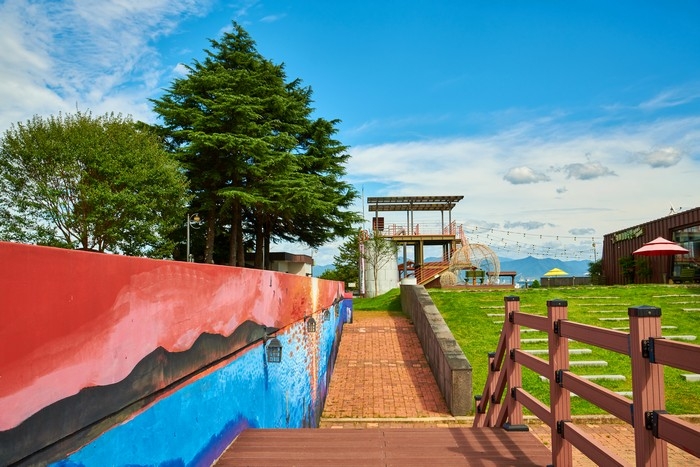
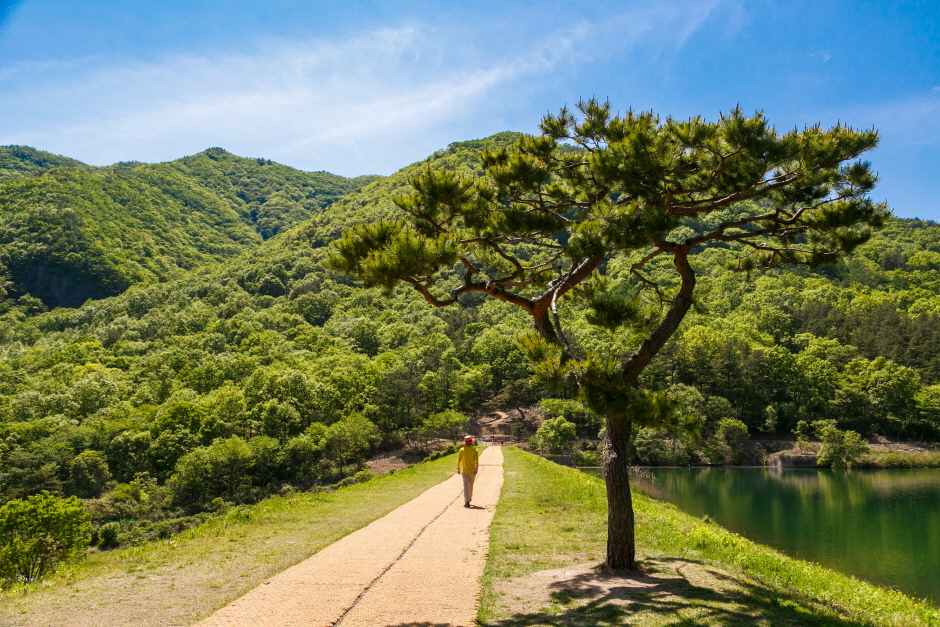
![NocWoonJae [Korea Quality] / 녹운재 [한국관광 품질인증]](http://tong.visitkorea.or.kr/cms/resource/71/2049271_image2_1.jpg)
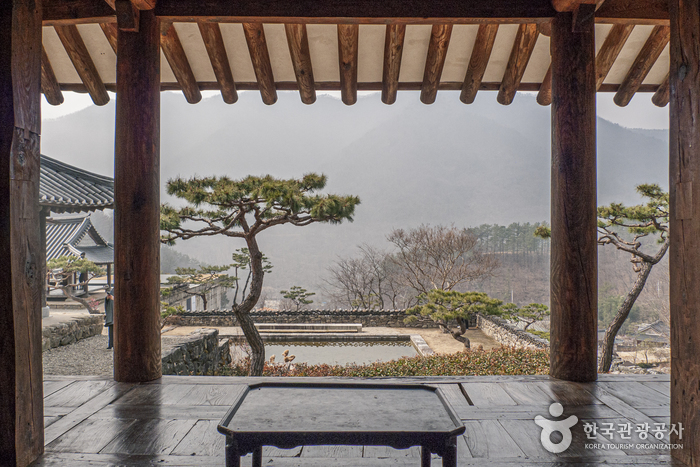
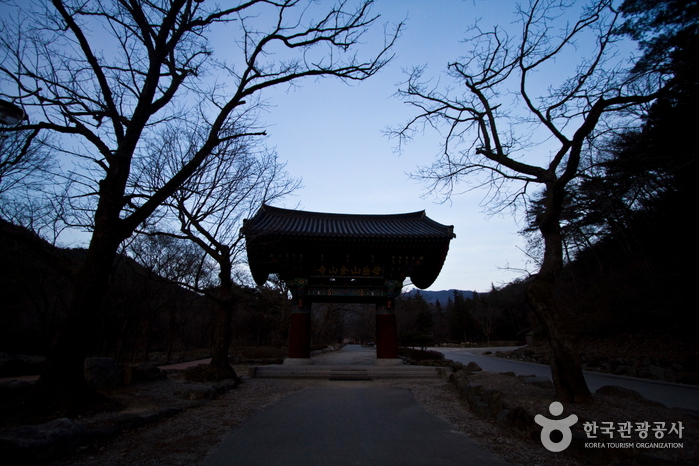
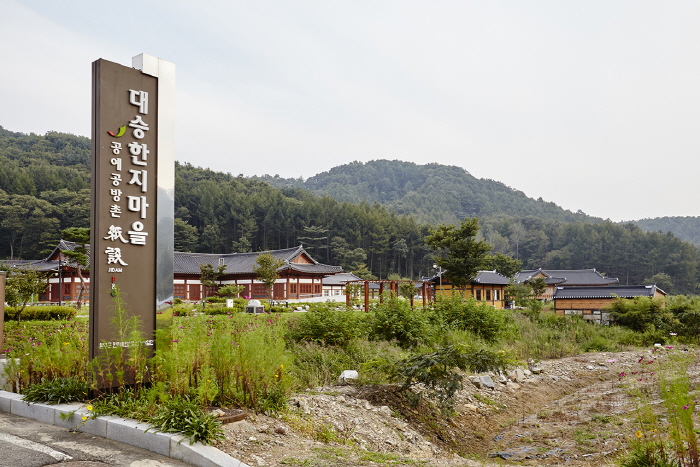
 Español
Español
 한국어
한국어 English
English 日本語
日本語 中文(简体)
中文(简体) Deutsch
Deutsch Français
Français Русский
Русский